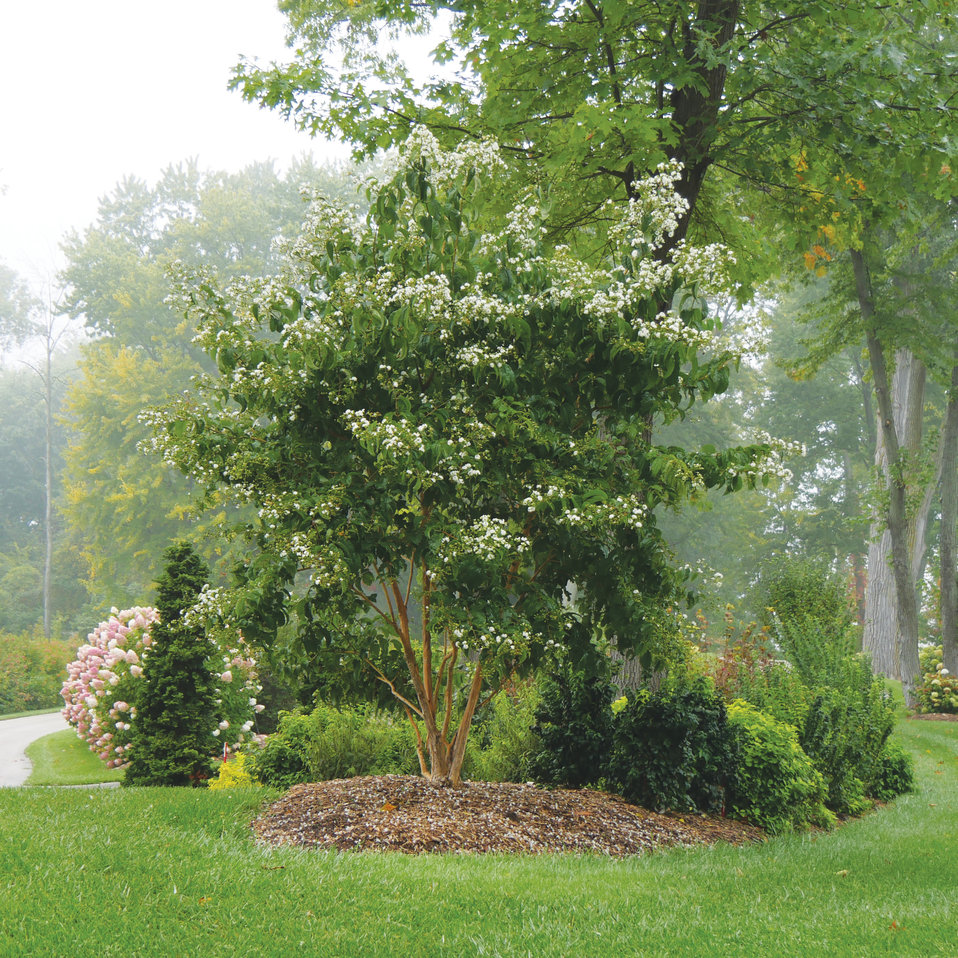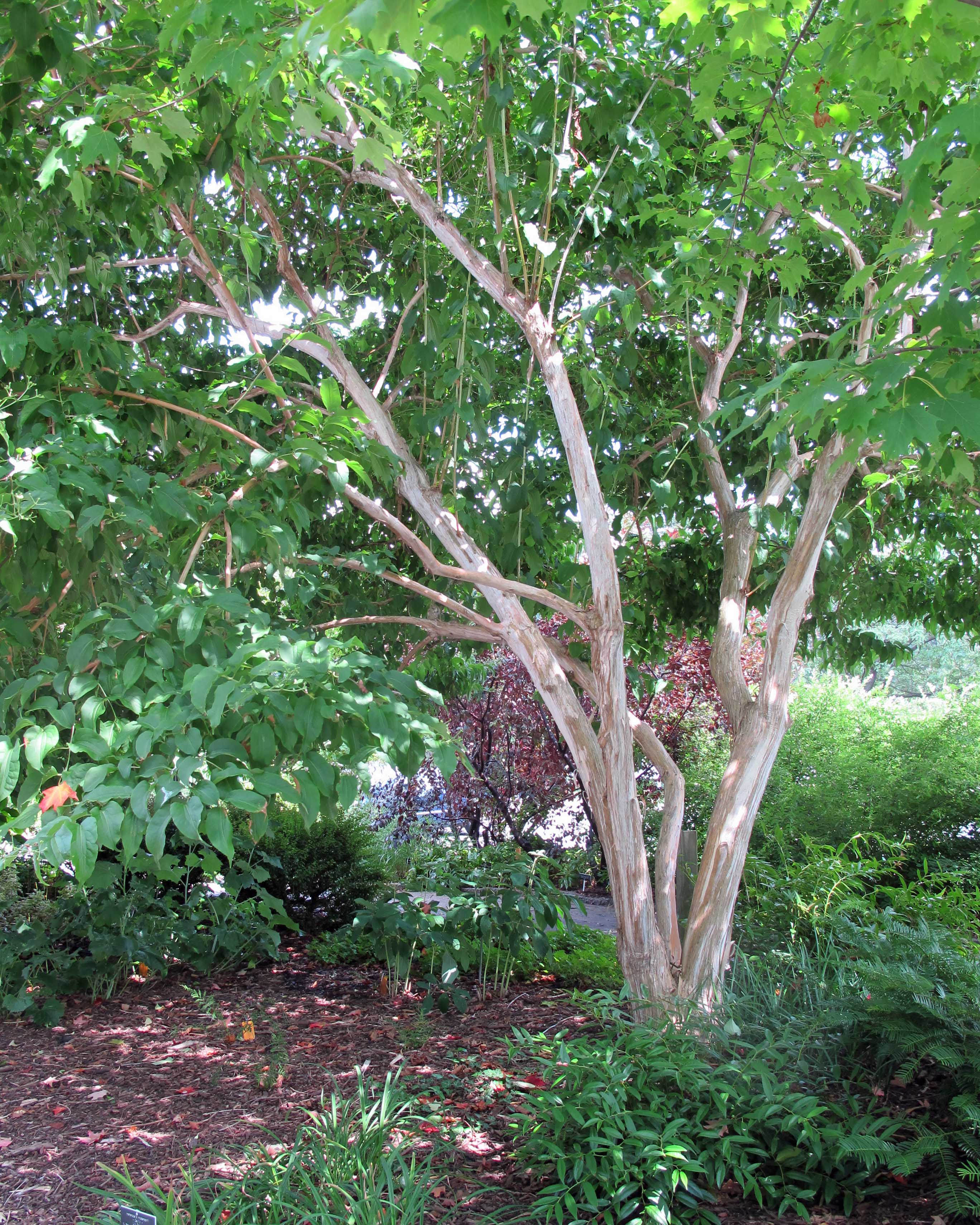It is undeniable that Crape Myrtles exploded on to the scene over the past decade. They seem to be planted everywhere in the Piedmont Region of Virginia. Due to the over planting of this decorative tree we are seeing a resurgence in Crape Myrtle Tip Blight. Crape Myrtle Tip Blight results from a fungus that causes leaves near the tips of the tree branches to turn brown in spring or summer. If you look closely at the infected foliage you can see the small black spore-bearing bodies. There are ways to avoid this problem, by planting a similar but superior tree. If you are thinking about planting a Crape Myrtle consider a comparable tree that your neighbor’s probably will not have.
The Seven-Son-Flower (Heptacodium miconioides) is a large, fountain-shaped, multi-stemmed, deciduous shrub that typically grows 15-20′ at maturity with a 10′ spread. It may also be trained as a single-trunk tree. This sassy underused tree features attractive white flowers which appear in whorls at the end of each branched cluster in early summer. Each whorl contains 7 tiny flowers (hence the common name of seven-son flower). Flowers are followed in fall by an equally showy (if not showier) display: small, purplish-red fruits, which are almost always immediately consumed by birds; leaving the ‘crown’ of five very showy, sepal-like rose calyces which last into late fall. Tan bark exfoliates to reveal attractive brown inner bark, which provides good winter interest. Birds use this bark as nesting material and will even nest in the tree itself. Its leaves are narrow, shiny, ovate-oblong and medium-green with a beautiful fall color. This tree has been a personal favorite here at Windridge for a while and we are delighted to see it coming available in our local nurseries, it is definitely increasing in popularity as an ornamental tree. Cultivars such as ‘Temple of Bloom’ can now be found with ease due to the plant being grown locally. It is a good source of nectar for butterflies in the fall.






